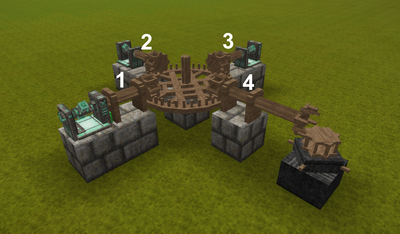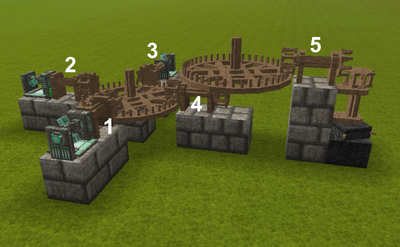Translations:Mechanical power/102/en
From Vintage Story Wiki

Simple large gear setup that combines torque from three power sources into a single output. 1, 2 and 3 are creative auto rotors which provide power, 4 is the output.
To build complex and efficient power trains it's important to understand relation between speed and torque, and how they are affected by resistance of a given mechanical system.
- Resistance defines how much rotational energy the system needs in order to continuously operate. If there is not enough torque to counteract resistance, entire power train will lose speed or even come to a complete halt. Each element of the system, such as axles, gears and transmissions, has some resistance. However, machinery doing useful work tends to contribute the most.
- Torque is a measure of rotational force and directly counteracts resistance. Adding more torque to the system can help it overcome the resistance of connected machinery, allowing faster operation. However, as soon as resistance is completely overcome - there is no point in further increasing the torque.
- Speed defines the rate at which machines in the system perform their job. Increasing the speed allows for faster operation, but only if there is enough torque to sustain it; otherwise most of the speed will be lost to resistance.
